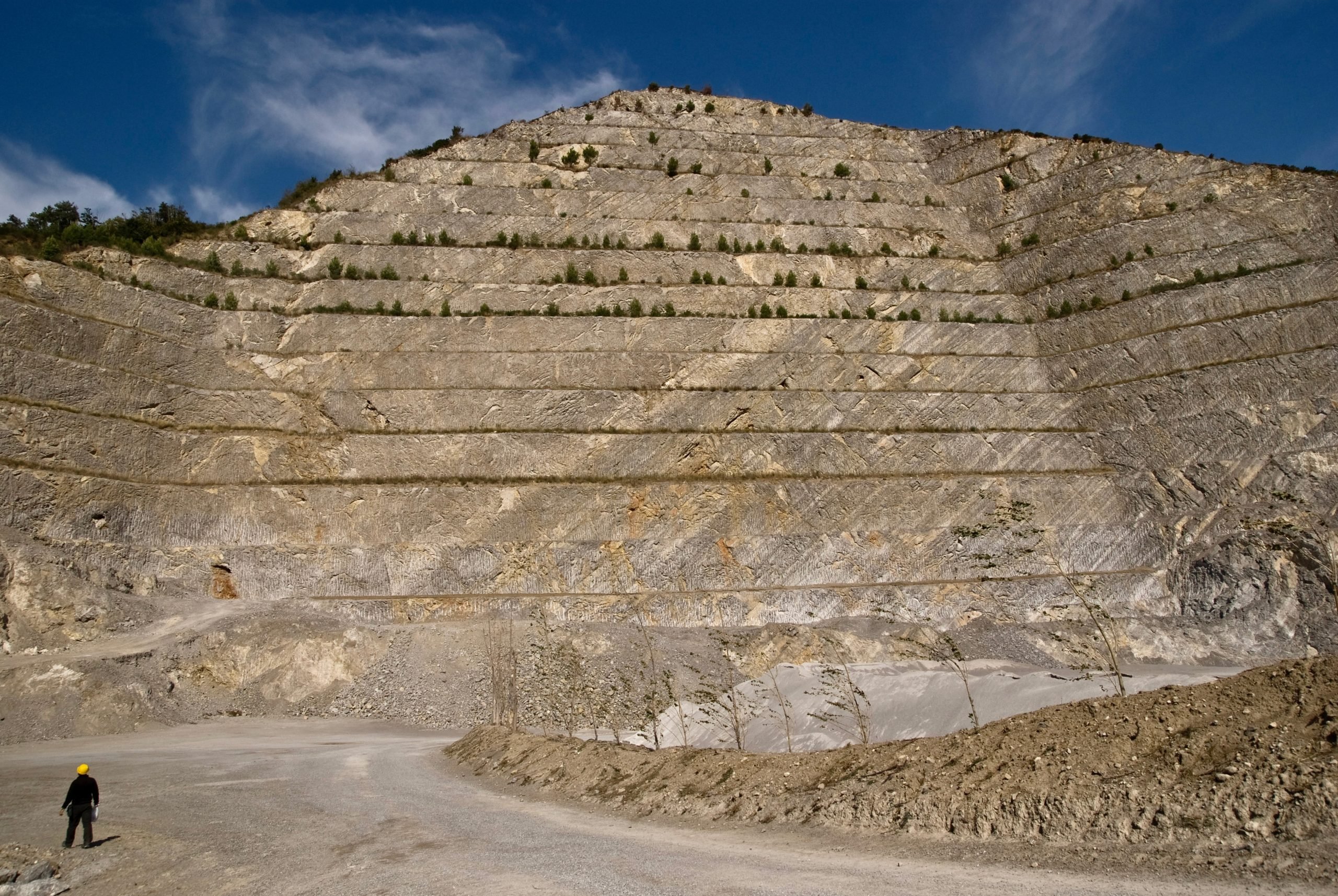A quarry with bands of layered limestone from the ancient seabed in what is now Mercato San Severino, Italy. Credit: Mariano Remírez, George Mason University
Approximately 183 million years ago, during the Toarcian Oceanic Anoxic Event (T-OAE), volcanic eruptions in what is now South Africa released approximately 20,500 gigatonnes of carbon dioxide (CO2) into the atmosphere and oceans over a period of 300 to 500 thousand years. This significant influx of CO2 led to severe oxygen depletion in marine environments, resulting in widespread extinction of marine life.
Human activity since the Industrial Revolution has already resulted in cumulative CO2 emissions that represent 12 percent of total CO2 emissions over the entire T-OAE, less than 0.1 percent of the time. The T-OAE predicts what could happen to our oceans if greenhouse gas emissions continue to increase.
Scientific analysis of ocean oxygen depletion
“You can see lots of fossils in oceanic sediments before the T-OAE, and then suddenly they disappear,” says Caltech’s Francois Tissot, a professor of geochemistry and a researcher at the Heritage Medical Research Institute. Tissot is a co-author of a new study published June 24 in the journal Proceedings of the National Academy of Sciencesdescribing the magnitude of ocean anoxia during the T-OAE.
The team, led by researchers from George Mason University, collected 30 samples of layered limestone from the Mercato San Severino region of southern Italy to assess the severity of ocean oxygen depletion during the T-OAE.
The team analyzed the samples for their uranium content and isotopic composition. Isotopes are twins of an element with different numbers of neutrons and therefore very slightly different masses. The relative abundance of uranium isotopes in the ocean depends on the amount of anoxia. This means that by measuring the isotopic composition of uranium in the ocean, scientists can infer the amount of anoxia in the ocean. In the absence of actual seawater samples from the past, scientists can use a proxy for this, such as carbonate rocks, which faithfully record seawater composition.
When there is plenty of oxygen in the ocean, uranium prefers to stay in its soluble form, dissolved in the seawater. But when oxygen in the water becomes scarce, uranium begins to precipitate out of the seawater and settle in sediments on the ocean floor. So, through careful modeling developed by former Caltech postdoctoral researcher Michael Kipp, Tissot and collaborators, the amount of uranium in seafloor samples can indicate the percentage of oxygen in the ocean at the time of the T-OAE.
Impact of oxygen deficiency on the ocean floor
“Using this model, we found that anoxia peaked at 28 to 38 times the current ocean,” Tissot says. “Today, only about 0.2 percent of the ocean floor is covered by anoxic sediments, comparable to that in the Black Sea. At the time of the T-OAE, 183 million years ago, 6 to 8 percent of the ocean floor was covered by anoxic sediments.”
The results indicate that past OAE events may be a precursor to the effects of human-induced CO2 emissions on marine ecosystems.
“If we do not reduce CO2 emissions and continue to increase CO2 emissions, we can clearly see that this will have serious negative consequences for the ocean ecosystem,” Tissot said.
Reference: “Carbonate-uranium isotopes record global extension of marine anoxia during the Toarcian Oceanic Anoxic Event” by Mariano N. Remírez, Geoffrey J. Gilleaudeau, Tian Gan, Michael A. Kipp, François L. H. Tissot, Alan J. Kaufman and Mariano Parente, June 24, 2024, Proceedings of the National Academy of Sciences.
DOI: 10.1073/pnas.2406032121
